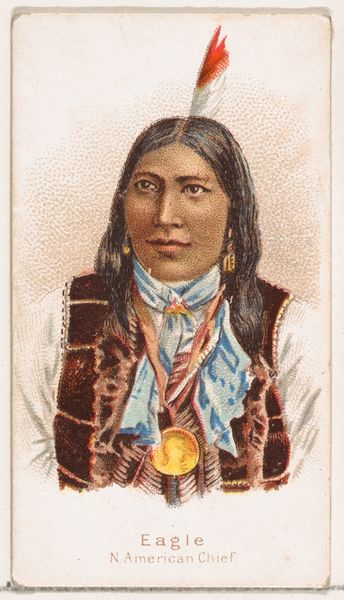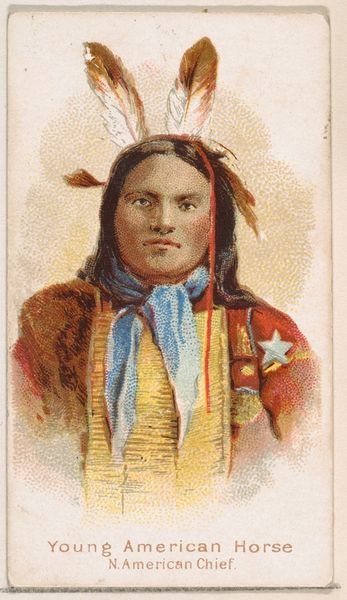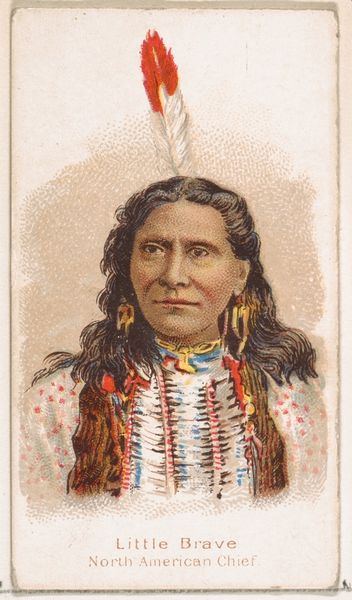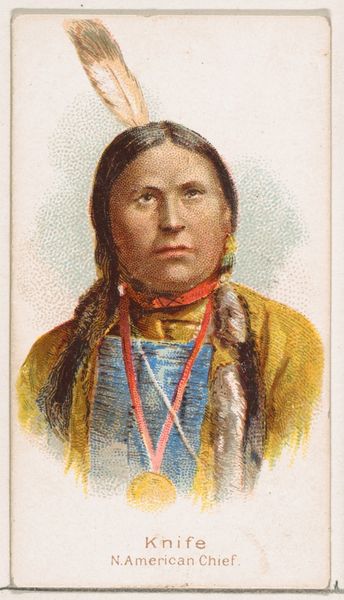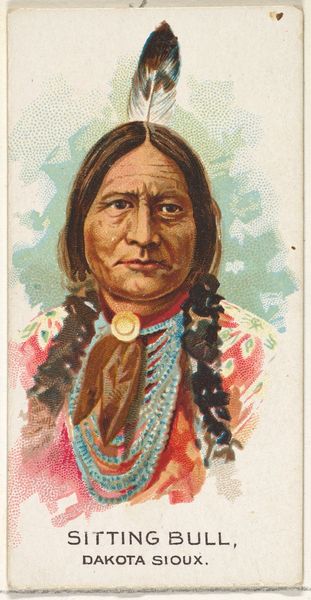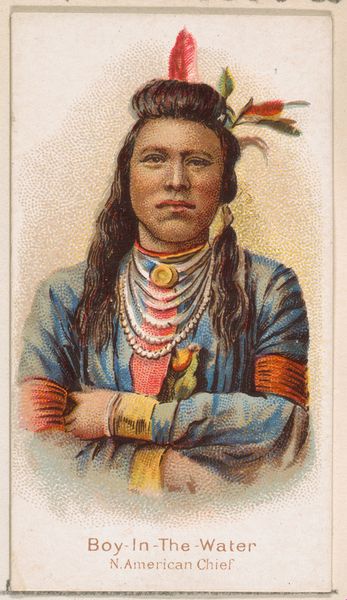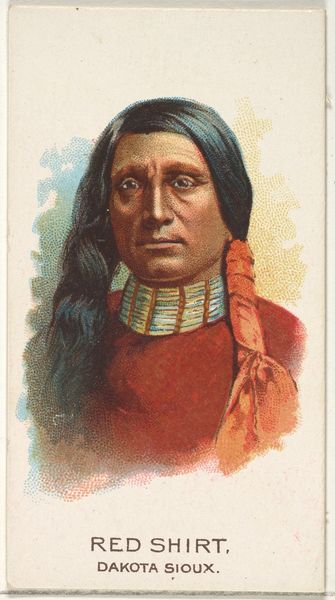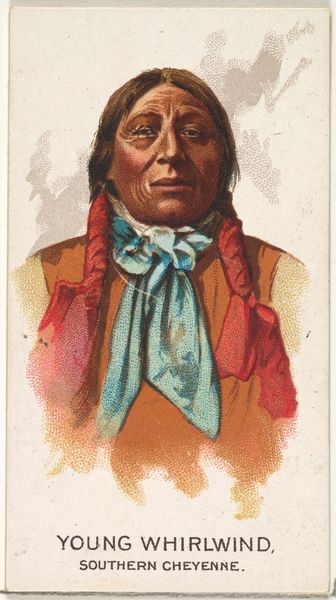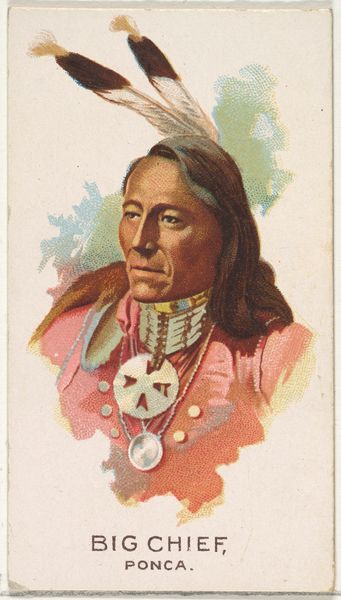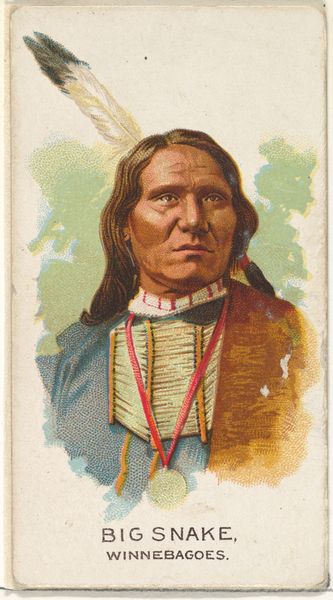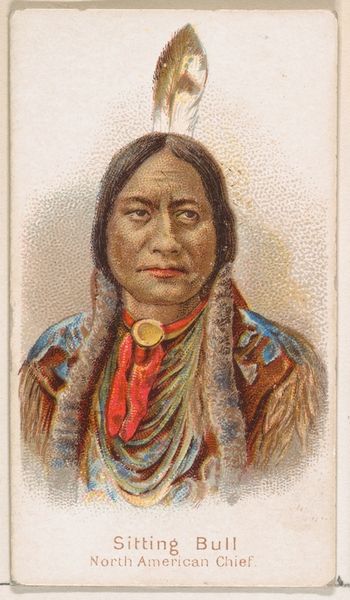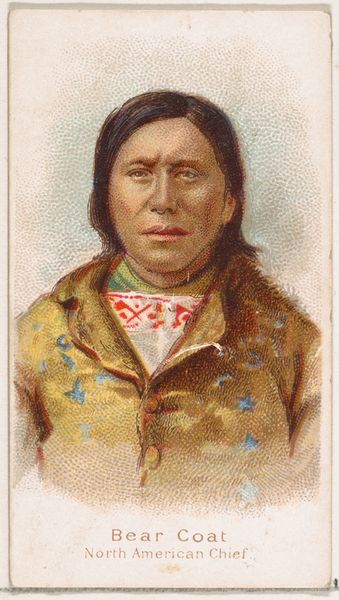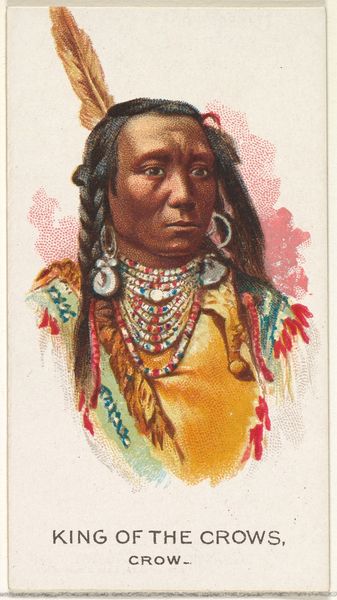
Little Brave, North American Chief, from the Savage and Semi-Barbarous Chiefs and Rulers series (N189) issued by Wm. S. Kimball & Co. 1888
0:00
0:00
#
portrait
# print
Dimensions: Sheet: 2 11/16 × 1 1/2 in. (6.8 × 3.8 cm)
Copyright: Public Domain
Curator: This print, "Little Brave, North American Chief," comes to us from an unusual place: a cigarette card! William S. Kimball & Company included these cards in their tobacco products back in 1888. It’s part of a series they titled "Savage and Semi-Barbarous Chiefs and Rulers". Editor: It has such a sweetness to it, despite that loaded title! I can't help but be drawn in by the figure’s quiet gaze and the delicate rendering. There’s an almost dreamy quality about the colors, too. Curator: These cards, made through a printing process and often employing drawing techniques, highlight the means of production for mass consumption. Tobacco companies were leveraging popular fascination with Indigenous peoples to sell their wares. We must consider it, as it’s clearly not neutral. Editor: Exactly, there's something deeply unsettling when you view this image, divorced from its historical packaging, when it really should be an incredibly sensitive depiction, and someone just used it to sell cigarettes. It is such a disconnect from the human that’s being captured. Curator: The romanticized portrayal flattens complex histories, reducing Little Brave to a type. Think about the labour involved; the artists, the printers, the workers in the tobacco fields—a whole network fueled by specific socio-economic conditions. Editor: I’m looking at the little feather adorning their hair. One singular feather. And it speaks volumes about how the West saw this culture, everything boils down to just the feather. I'd love to know his actual story and thoughts! To fill in the gaps created by its commercial context. Curator: And by interrogating the materials—paper, ink, the very means of distribution—we gain insight into not just the image, but also the machine that produced it and the world that consumed it. Editor: Perhaps by acknowledging the initial commercial ugliness we can start to pull out something redemptive; like honouring a person behind a caricature, even 100 years later. Curator: Ultimately, these everyday artifacts offer rich insights into prevailing cultural attitudes and the mechanics of image production during the late 19th century. Editor: Agreed! It reminds us that everything, even the smallest image, has a story to tell, often multiple, contradictory ones.
Comments
No comments
Be the first to comment and join the conversation on the ultimate creative platform.

